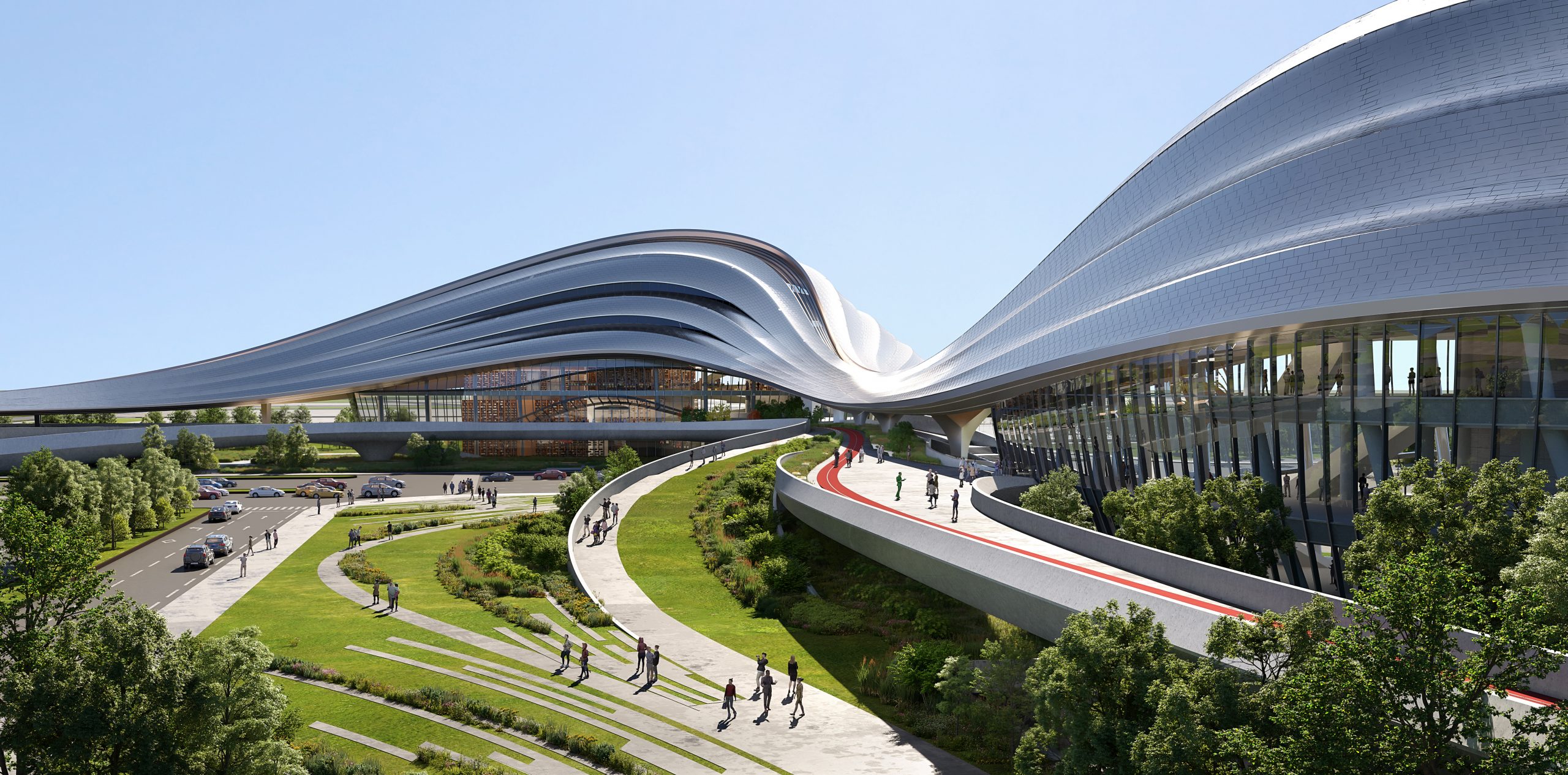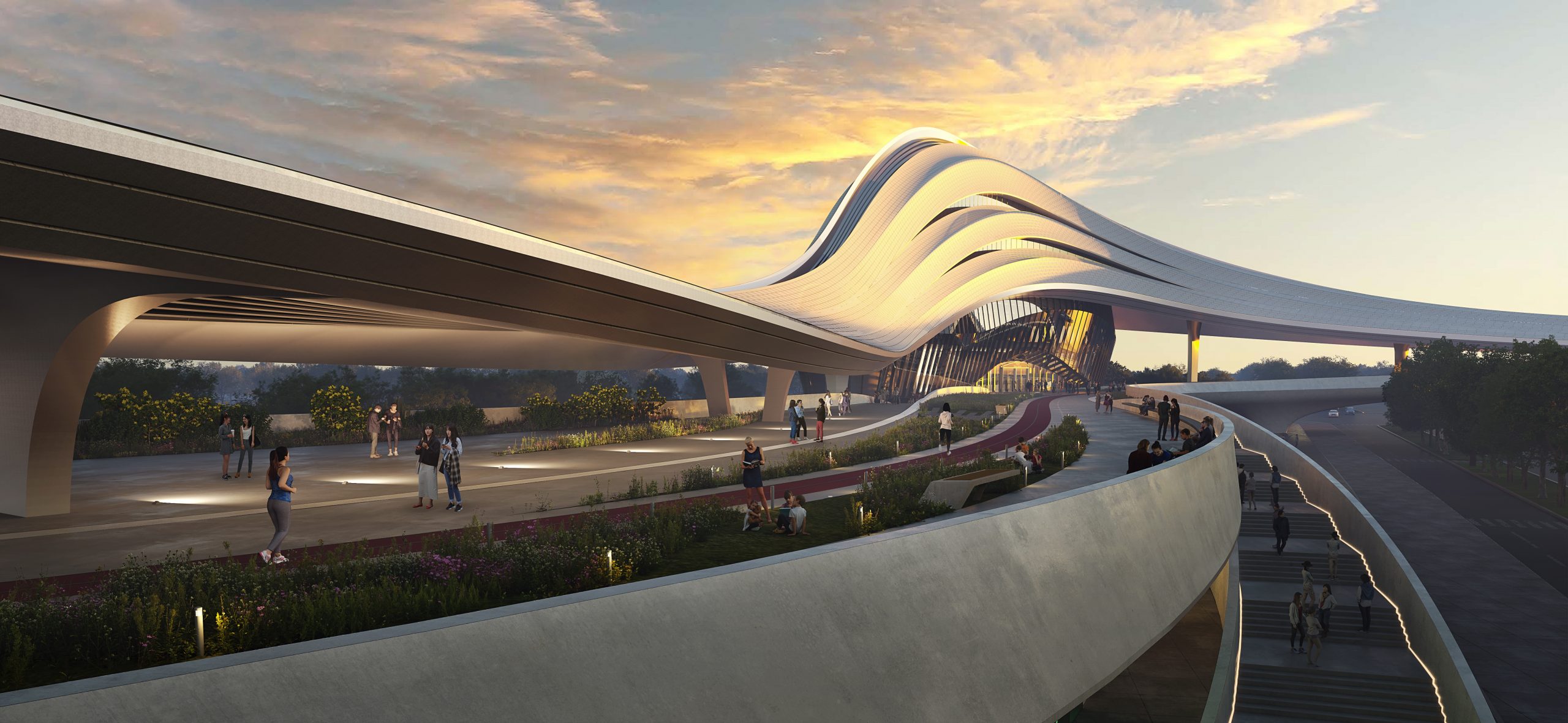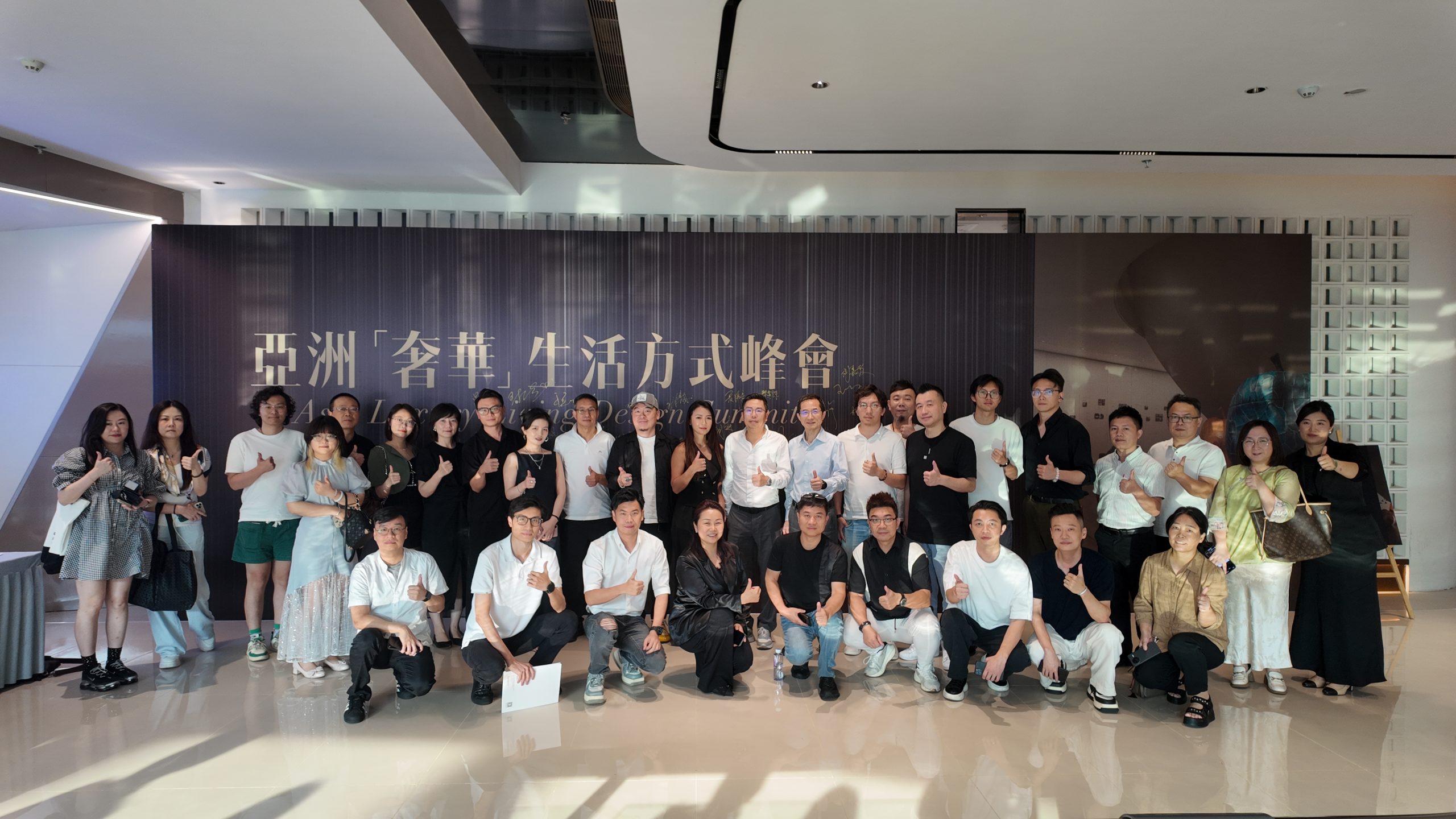A groundbreaking ceremony to begin the building of the Jinghe New City Culture & Art Centre took place this month, graced by local and regional officials. Designed by Zaha Hadid Architects (ZHA), the planned Jinghe New City Culture & Art Centre mirrors the Shaanxi province’s naturally carved environment.
Developing as a centre for research and technology north of Xi’an, Jinghe New City is becoming a hub for emerging sectors with an emphasis on new energy and materials, artificial intelligence, and aerospace, supported by new scientific research institutes and motivated by environmental concerns.
For this centre, green initiatives include solar irradiation studies and responsive site planning to maximise the centre’s use of natural ventilation and lighting, set against the mild, temperate environment of Jinghe New City. In order to earn a 3-star certification in China’s Green Building program, the centre’s construction will prioritise locally made materials with high recycled content and use photovoltaic panels for on-site electricity generation along with rainwater collection.
Essentially, the centre will advocate for the best building practices in the entire city, showing Jinghe New City’s commitment to offering top-notch design and urbanism by establishing a range of new public spaces to benefit the neighbourhood.
- Jinghe New City Culture & Art Centre by ZHA (Photo Credit: ATCHAIN)
Situated within the Jinghe Bay Academician Science & Technology Innovation sector of the city, Jinghe New City Culture & Art Centre echoes the meandering valleys that the Jinghe River carved through the mountains and landscapes of Shaanxi Province.
The centre’s design integrates with the city’s existing urban masterplan to create a connection between the new multimedia library, located to the north of Jinghe Avenue, and the performing arts theatre, multi-function halls, studios, and exhibition galleries, located to the south. This connection is made possible by elevated courtyards, gardens, and paths that cross the eight lanes of traffic that are present on the avenue.
The centre weaves through the city to connect its commercial and residential districts with the parks and river to the south, as well as bringing city residents into the centre of the building and providing direct access to the planned metro station, with gently sloping ramps serving as a gateway to the district’s network of elevated public walkways.
- Jinghe New City Culture & Art Centre by ZHA (Photo Credit: ATCHAIN)
The design defines a number of internal and outdoor cultural and recreational areas for its community and is organised as a series of flowing volumes, layers, and surfaces that link with courtyards and landscapes.
The terraces of the multimedia library face out onto its full-height atrium, which has diffused skylights and a range of public reading areas for both solitary and group study. Print materials and immersive virtual reality technology that broaden learning opportunities and enhance information exchange will be combined in the library.
Located on the southern side of the avenue, the performing arts theatre accommodates 450 people and can be adapted for many types of events. The multi-function hall, studios and galleries are stacked and arranged around the theatre to share public areas designed to enhance accessibility and inter-disciplinary collaboration.





